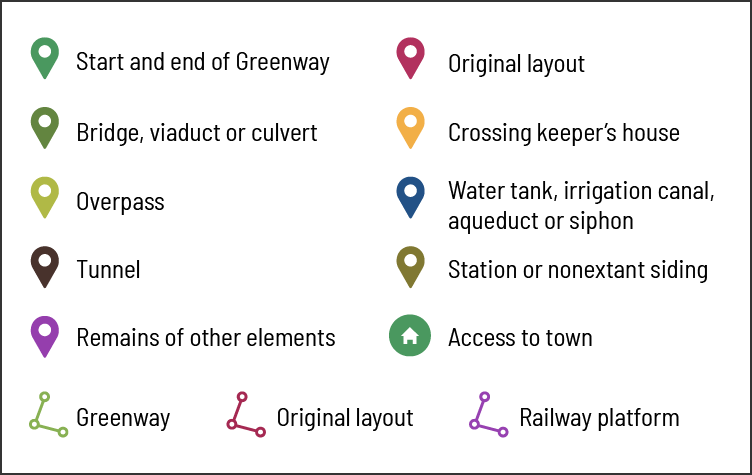Torrevieja
(Torrevieja-Albatera line)
Torrevieja is home to a greenway that measures 6.7 km in total. Its origins can be found in the branch line that connected the Murcia–Alicante line to Torrevieja at Albatera.
Project currently at the research and development stage.
The railway line that was converted into this greenway dates back to 1884, when the Compañía de los Ferrocarriles Andaluces opened a dual route. The first part was the Murcia–Alicante line. The other was a 27.3 km branch line starting at Albatera that connected this route to nearby Torrevieja: an economic hub, thanks to its famous saltworks. The goal was to transport the salt to the Port of Alicante so that it could be exported, though in the end, the line would never link up with this port. The Albatera–Torrevieja route was an Iberian-gauge (1,668 mm), non-electrified, single-track branch line. For decades, it served various villages and towns in Vega Baja del Segura: Almoradí, Dolores, Benijófar, Rojales and Torrevieja.
Signs of decline appeared in the 1960s, with the closure of several stops. In 1970, the passenger service was eliminated and all the stations along the route were closed. It continued to transport salt for a while, with one journey every two weeks from the saltworks to the Port of Torrevieja. Following its closure in 1986, the Albatera–Torrevieja branch line was dismantled in 1990. Later on, Torrevieja Town Council requested control over the stretch that passed through the town in order to revitalise the old route. Following various interventions, a 6.7 km section between Torrevieja and the Carretera de los Montesinos road (CV-945) was converted into a greenway, thanks to a public–private collaboration led by Iberdrola and the Valencian Government. The Cátedra Demetrio Ribes is trying to restore the memory of some damaged remains of the line’s infrastructures that appear next to the greenway from the old Torrevieja Station (now a natural history museum) onwards. They include a water tank, a halt and a crossing keeper’s house.


